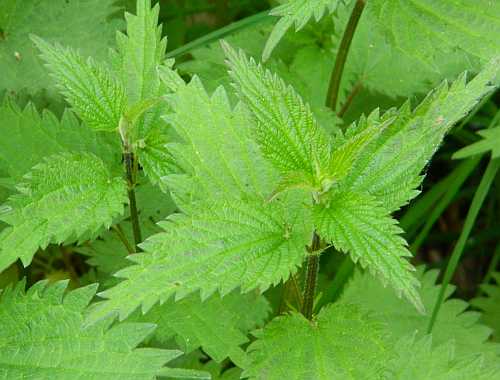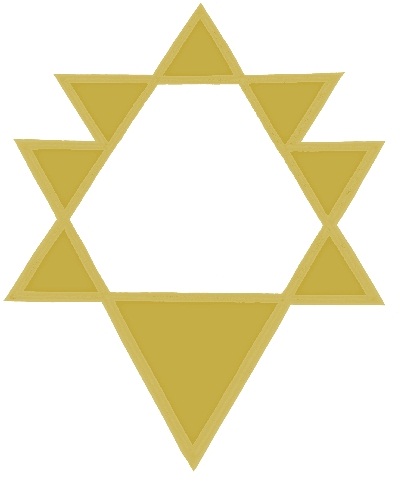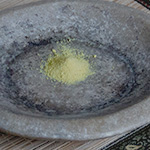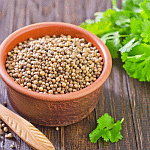.jpg)
Season's significance and a Recipe with Brennessel (stinging nettle)
16.05.2012 | An Explanation about the changes of seasons and their conditons in Europe and India with a special recipe for a Brennessel dish.By Dr. Sajan Kumar S. (B.A.M.S.).
Artikel in Deutsch
In my state, Kerala lying in the south west of India, there is a tradition of eating fresh leaves of wild herbs collected from the surroundings, once the monsoon starts. There is a famous soup of the season with ten different herbal leaves with rice also. It is said that the devas (celestial beings) of the heaven are spilling some Amruth, the divine elixir, on the leaves. So, eating of these fresh leaves eliminates all diseases, cleanses and rejuvenates.
In the Indian circumstances, starting of Monsoon indicates the strengthening of the cooling downward flow of the cosmic energy. Rain and the flow of water in the streams and rivers, fast and healthy growth of plants, development of fertility, etc are signs of this change. The other half which is ending with the end of summer is the heating upward side balancing this. All living beings loose their strength and vigour during that half. The cooling downward flow brings this lost strength back which is putting together the particles, promotes strength and vigour in nature and in human body. Cooling down indicates the converging nature of the phase while heating up is the diverging counterpart. So, monsoon, autumn and winter promote physical development, fertility, good sleep, deep thoughts, learning, concentration of mind and all kinds of soft and tender emotions. Heating up side holds all the opposite characters. It is tiring, exhausting, and weakening. Integrity of the physical body and its materials are getting loose in this phase.
In Europe the most significant change in the weather is the end of winter changing in to spring. The snow and ice collected everywhere gets melted causing a rise of water level in the rivers, sometimes leading to floods here and there. Plants wake up from their sleep unfolding the fresh leaves and many with a flood of flowering as well. One could really see how the message of the change of season reaches each and every cell and what changes are followed by. We always observe all these changes with a feeling that seasons simply pass through the external nature and we are only the spectators. In Ayurveda view, this is not true. Seasons are passing through us too.
When we sleep, body and mind goes in to their converging phase. Body becomes completely passive, like a piece of matter belonging to Earth. Praana and Ahamkaaara releases their hold on the physical body. Praana makes its vibrations down, mind converges in to an almost point level and sense organs withdraw themselves from the surroundings. Winter also is doing the same. Plants shed all leaves and stop growth while some animals go in deep sleep (hibernation) in tune with this channge. Curling up of animals making hibernation and that of humans while sleeping and especially when falling ill and in foetus stage, indicates this convergence. Like we wake up in the morning, the divergent phase is on with the beginning of Spring. The life force held back reverses and that makes the sudden outburst of flowers and leaves. Eventhough we don't hibernate, human body and mind also have certain influences of this changes.
Hay fever, allergies, cold, influensa, etc. are caused by the accumulation of Kapha during winter and its outburst at the beginning of spring. Cold and dry properties which are dominating in winter causes a strengthening and accumulation of Kapha just like the ice and snow formation in winter. When Snigdham (Unctuous) and hot properties start gaining strength at the beginning of spring, just like the melting of snow and ice, the accumulated kapha also gets visciated, making sudden onset of illneses. And just like the flooding water needs fast and easy evacuation, sodhana (cleansing or evacuating) kinds of treatments Ayurveda advice in such situations. Toxins of many kinds stay in the body without causing or showing any signs or symptoms during winter. This is due to the covering or coating property of Kapha. Liquifaction of Kapha releases these toxins and they become active, manifesting diseases. Because of Kapha's coating property itself, cleansing is difficult during winter and its melting during spring makes it easy to get rid of them also.
Ayurveda understands doshas and materials in nature, especially food and medicine, in terms of gunas. Gunas are the subjective qualities that materials exhibit or properties one could sense or feel. They are always presented as pairs. Philosophically in the simplest way can say that the neutral state of Brahmam polarises in to a pair of gunas. This is like a plus one and a minus one polarising out of zero. With this concept, all properties we experience in this universe certainly have its equal and opposite somewhere. An Ayurveda version of the same principle is that, whenever some disease spreads in a locality, herbs having equal opposite gunas also will flourish in and around the same place. Seasonal herbs are thus related to seasonal health problems. Olden times each land and culture had such awareness, folklore and indigenous systems of medicine which recognised such relations and brought in to practice also.
In this perspective, this is an attempt to make an Ayurveda understanding of Brennessel which is a well known herb and much of its medicinal properties are well understood also. Brennessel appears to be very much Kapha-Vaatha pacifying. Diseases of the season mostly take origin from the liquifaction of Kapha and its effect on the flow and dynamicity of the various systems which is managed by Vaatha also. Diseases of the respiratory system in this season are mostly of Kapha Vaatha origin and the skin problems appearing and getting aggrevated are also the same. Diseases like Psoriasis, Eczema, Allergic dermatitis, Neurodermitis, dandruf, etc falls in this category. Balancing Kapha-Vaatha disorders indirectly means the normalising of Pitha as well. In this respect, brennessel purifies blood, revitalises skin and hair, control hairfall, and promote proper digestion and motion as well.

Drinking Brennessel tea is a common practice which many do. But cooking and eating seems giving better results. Luckily eating Brennessel can be made in to a good experience also with its fine taste. Here is a recept enriching the properties of Brennessel and making it delicious as well.
Ingredients:
1. Freshly collected and washed Brennessel – 100.gms
(Take only two or three pairs of leaves from the top to avoid strong fibres)
2. Onion – A quarter portion cut in to fine pieces
3. Capsicum – One third from a medium sized
4. Fenugreek – One tablespoon (Kapha-Vaatha pacifying)
5. Nutmeg – a little (Kapha pacifying)
6. Garlic – 2/3 (Vaatha pacifying and opening the passages (Srothas) of the body).
7. Pepper – half teaspoon (Kapha-Vaatha pacifying and opening the passages)
8. Coconut Milk – Three tablespoons
9. Sunflower Oil – Two teaspoons (Comparatively less Kapha promoting oil)
10. Fennel powder – a quarter teaspoon (Kapha-Vaatha pacifying)
11. Turmeric – half teaspoon (Antitoxic)
12. Tomato – One medium sized.
13. Salt
Preparation:
Heat the oil in a vessel and roast the capsicum and onion slices. When they are alsmost roasted, add fenugreek seed and roast them also. When everything is almost roasted enough, add turmeric powder, pepper powder, nutmeg powder, cardamum crushed and fennel powder. Put the finely cut Brennessel leaves in and roast. Add tomato slices when the leaves are alsmost roasted. Put salt and cocont milk at the end. Ingredients and their quantities can be varied according to individual taste. A delicious result proves the harmonious matching of the ingredients and its match with the body mind or what it really is in need of.
Conclusion:
It should be noted that each disease have got its variations depending on the dosha involvement. Eventhough the above said diseases are generally Kapha-Vaatha origin, they also have other variations and different stages where dosha involvement varies. With many other diseases having Kapha-Vaatha subdivisions, and people belonging to this basic constitution will also get positive results. When the diagnosis of the dosha disorder and the prescribed medicine and lifestyle advice are accurate, a patient will feel relief from all his complaints which were spoken and also some others which are untold.
©Dr.Sajan kumar. S.

Contact:
Dr. Sajan Kumar Somarajan
Pappelweg 33
63741-Aschaffenburg
E- Mail: vedayurkerala@gmail.com
Web: www.ayurvaidya.de






.png)

.png)


